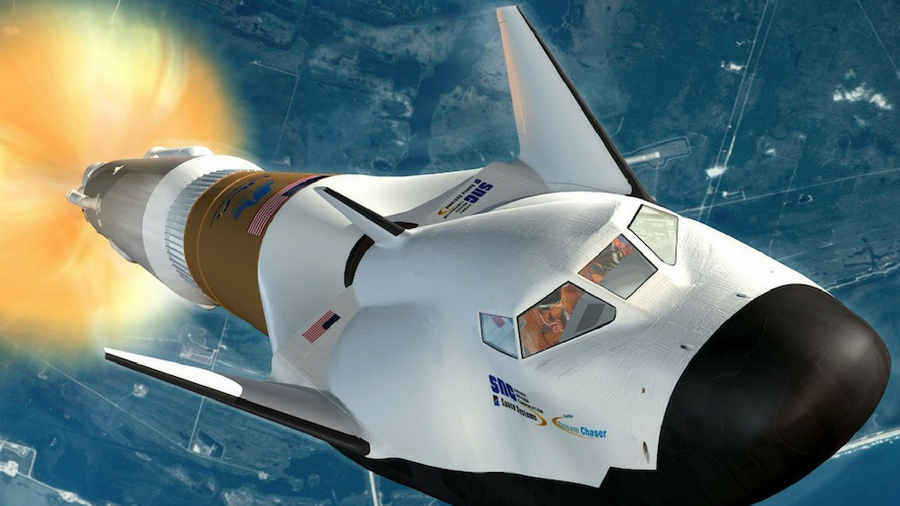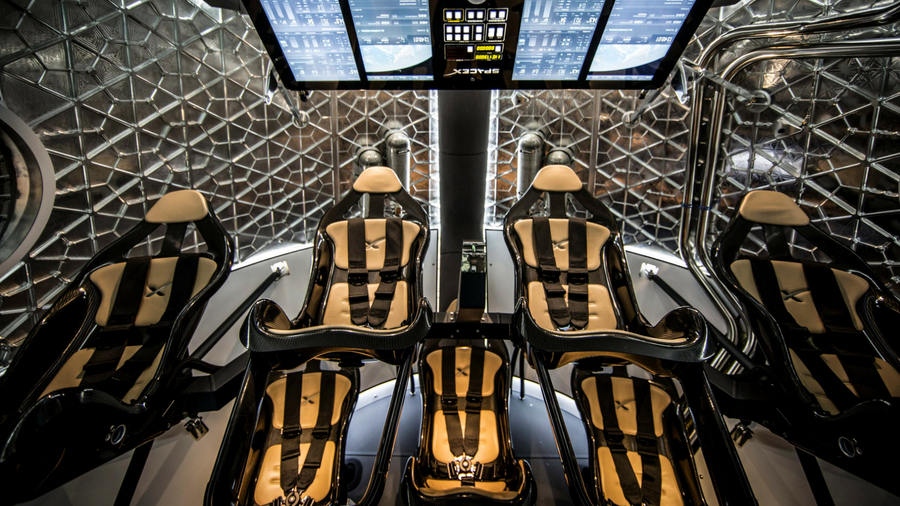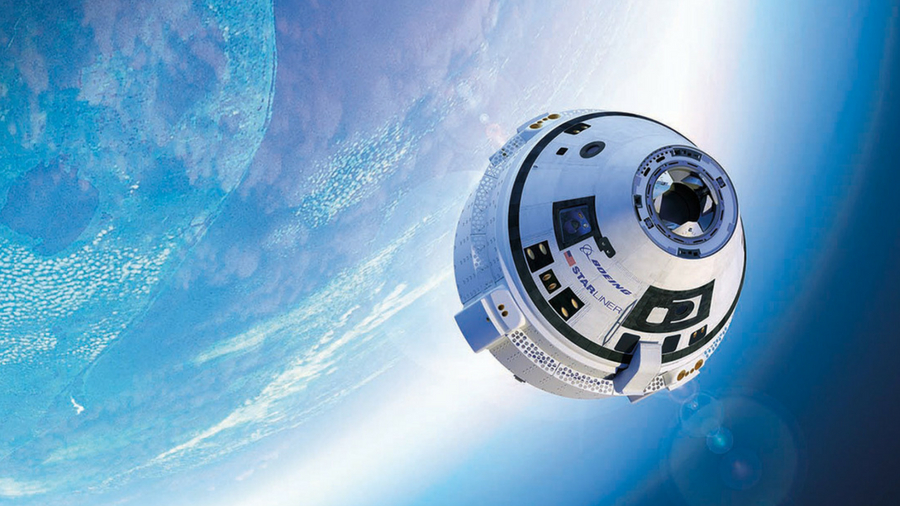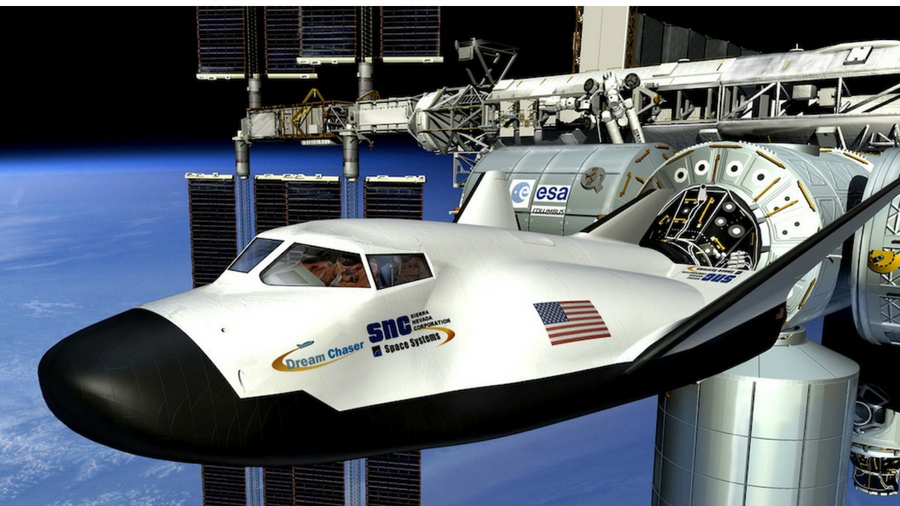The stunning new craft that will one day launch astronauts and space tourists
Complete with leather seats and Wi-Fi

Main image: SNC's Dream Chaser is being called an SUV – 'space utility vehicle'. Credit: SNC
Want to get your astronaut wings? For now, multi-millionaires only have one option: get to Moscow and convince the Russian Space Agency Rososmos to take you up to the International Space Station (ISS) in a Soyuz TMA-M capsule blasted skyward on a Soyuz rocket.
However, there is an effort on the part of NASA and its commercial partners – SpaceX and Boeing – to get astronauts into orbit and to the ISS from US soil. There are also three companies – Virgin Galactic, Blue Origin and SNC – that have designs on getting private astronauts or 'space tourists' to the fabled Kármán Line that separates Earth and space.
That means five stunning new spacecraft are in the works, from tried-and-tested capsule designs to supersonic planes, and even a 'baby Space Shuttle'.
- Do you have a brilliant idea for the next great tech innovation? Enter our Tech Innovation for the Future competition and you could win up to £10,000!
New Shepard
Manufacturer: Blue Origin
Passengers: 6
Purpose: Suborbital space tourism
Sign up for breaking news, reviews, opinion, top tech deals, and more.
Take-off: Vertical take-off on New Shepard rocket
Landing: Parachute
Location: West Texas
It's becoming clear that Jeff Bezos' private spaceflight company Blue Origin will probably become the first company to offer trips to space, albeit only lasting 11 minutes. That's partly because it's using a tried and tested technique common to spaceflight missions since the beginning: launch a capsule on a rocket, and have the capsule parachute back to Earth.
The New Shepard pressurized capsule is 530 cubic feet, and houses six reclining seats covered in soft leather, each next to a huge 42.7 x 28.6-inch window. There's a tablet on the wall beside each one.

It's a vertical take-off, with the capsule on top of a 60-foot-tall New Shepard booster rocket. After a 150-second ascent, the engines cut, and the capsule – by then traveling at Mach 3 – separates from the rocket and continues on to space. The six people then undo their harnesses, enjoying weightlessness for three minutes, then return to their seats for a brief Mach 5 descent before three parachutes are deployed.
The capsule returns gradually to Earth just a few miles from the launch pad, and a soft landing is ensured by a thrust system. Meanwhile the New Shepard booster makes a rocket-powered vertical landing back where it started, so Blue Origin's New Shepard system is completely reusable.
If anything goes wrong during take-off or during the ascent, a rocket motor on the undercarriage of the capsule itself will burn for two seconds to fling it clear.
Crew Dragon
Manufacturer: SpaceX
Purpose: Orbital spaceflight
Passengers: 7
Take-off: Vertical take-off on Falcon 9 rocket
Landing: Parachutes
Location: Florida
Although the Dragon capsule has been around for years, and has been taking payloads up to the ISS since 2012, SpaceX’s Crew Dragon incarnation is 'human-rated'.
Capable of carrying seven astronauts, Crew Dragon could (and probably will) be used for space tourism at some point, but it's designed to initially take up to four professional astronauts to the ISS as part of NASA's Commercial Crew Program .
The seven carbon fiber seats are covered in Alcantara cloth, a high-grade microfiber, with a three-screened Crew Command Panel accessible from two of the seats. A touch-panel includes manual control options, but the Crew Dragon is also fully autonomous; it can be flown either by the astronauts themselves, or by SpaceX mission control in Hawthorn, California.

There are four windows, but they're porthole-shaped, and rather small – after all this is primarily about science, not selfies. However, there is air-con.
The Crew Dragon capsule launches on a reusable Falcon 9 rocket, and is due to be used for the first time during Demonstration Mission 1 (SpX-DM1), an uncrewed test flight that's currently scheduled to launch on September 16 from Launch Complex 39A at Florida's Kennedy Space Center (crew Dragon's rival in the Commercial Crew Program is Boeing's Starliner capsule, of which more shortly). That will be followed by Demonstration Mission 2 (SpX-DM2), the first crewed flight test, tentatively scheduled for January 17 2019.
VSS Unity
Manufacturer: Scaled Composites for Virgin Galactic
Purpose: Suborbital space tourism
Passengers: 6
Take-off: Runway
Landing: Runway
Location: New Mexico
Tickets have been on sale for rides on a Virgin Galactic spaceplane for a decade, with the price recently jumping to US$250,000. Over 700 tickets have so far been sold, but it’s taking a long time to make Richard Branson’s dream a reality. The original SpaceShipTwo, VSS Enterprise, was lost in a fatal accident in October 2014, with the new version – named by Stephen Hawking, no less – called VSS Unity.

The total 2.5-hour Virgin Galactic experience goes something like this: six passengers sit in VSS Unity, a small supersonic plane, which launches from a runway at Spaceport America in New Mexico strapped to a carrier craft called VMS Eve. Unity then separates at 46,500ft and triggers the ignition of its rocket motor for 40 seconds or so, propelling it into space at Mach 2.5.
Then follows five minutes of weightlessness prior to re-entering Earth's atmosphere – hopefully gradually, thanks to a unique feathering system – and landing back on the runway. The cabin itself holds two pilots and six passengers, each with their own window, albeit a small porthole.
In July of this year VSS Unity reached an altitude of 52 miles, just 16 miles short of the fabled Karman Line that separates Earth from space.
CST-100 Starliner
Manufacturer: Boeing
Purpose: Orbital spaceflight
Passengers: 7
Take-off: Vertical on United Launch Alliance Atlas V rocket
Landing: Parachutes
Location: Florida
How about a 'space taxi' with Wi-Fi and iPads? Despite the provision of wireless internet and the possibility of in-flight entertainment, Boeing's Starliner will use its connectivity for the serious tasks of communication, and autonomous docking with the ISS.
A rival to the SpaceX Crew Dragon in NASA's Commercial Crew Program, it's highly possible that the CST-100 Starliner (CST stands for Crew Space Transportation) crew capsule could become the primary capsule used by NASA to get its astronauts into space. However, it's also probably got a future as a shuttle for space tourists, taking them either into orbit or for trips around the moon; Bigelow Aerospace is a partner, and is planning inflatable space habitats, first at the ISS and then free-floating in orbit.

Although it's designed to take seven astronauts, the Starliner can carry a mix of cargo and people; for NASA it's likely to take four astronauts plus cargo. Seven seats housed within a capsule interior that glows blue; the company's trademark color will be emitted from its Boeing LED Sky Lighting tech.
Like Crew Dragon, Starliner has backup manual controls, and lands by parachute. Boeing says the Starliner is reusable up to 10 times, with a six-month gap in between flights.
Although Boeing plans to perform an unmanned test flight of Starliner towards the end of this year, it recently experienced a problem with the craft's launch abort engines, so there's a decent chance there will be no test until 2019. Either way, Starliner will eventually launch atop a United Launch Alliance Atlas V rocket from Space Launch Complex 41 at Kennedy Space Center.
Dream Chaser
Manufacturer: Sierra Nevada Corporation (SNC)
Purpose: Orbital spaceflight
Passengers: 7
Take-off: Vertical take-off on a United Launch Alliance Atlas V rocket
Landing: Any runway that can take a Boeing 737
Location: Florida/anywhere
It looks like a Space Shuttle, it lands like a Space Shuttle… but at just nine meters long, SNC's Dream Chaser is six times smaller than its illustrious lookalike. Slated to service the ISS for NASA starting in late 2020, Dream Chaser spacecraft will provide cargo delivery and the return of science experiments under the Commercial Resupply Service 2 (CRS2) contract.

SNC lost out to SpaceX and Boeing for crewed missions, but under CRS2, Dream Chaser will provide a minimum of six cargo missions to and from the space station between 2020 and 2024. Although NASA doesn't initially want to use the Dream Chaser crewed – and will instead fly it remotely – it's capable of carrying up to seven astronauts.
Based on NASA’s HL-20 – the HL stands for horizontal landing – the basic design of the reusable Dream Chaser has existed since the 1980s. Taking off on a United Launch Alliance Atlas V rocket, Dream Chaser returns to Earth with a gentle runway landing, just as the Space Shuttle did – and for those CRS2 missions it'll land at the Shuttle Landing Facility at Kennedy Space Center, Florida.
TechRadar's Next Up series is brought to you in association with Honor


Jamie is a freelance tech, travel and space journalist based in the UK. He’s been writing regularly for Techradar since it was launched in 2008 and also writes regularly for Forbes, The Telegraph, the South China Morning Post, Sky & Telescope and the Sky At Night magazine as well as other Future titles T3, Digital Camera World, All About Space and Space.com. He also edits two of his own websites, TravGear.com and WhenIsTheNextEclipse.com that reflect his obsession with travel gear and solar eclipse travel. He is the author of A Stargazing Program For Beginners (Springer, 2015),